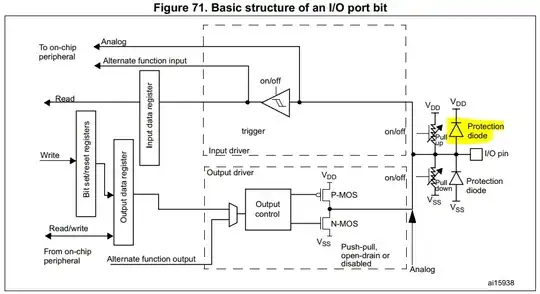Typically, an input pin on a non-trivial chip has diode clamps. The randomly selected picture below shows a typical setup.

Adapted from image source: ST Microelectronics - STM32 reference manual RM0468
I highlighted the protection diode. If you apply an excessive voltage to the I/O pin, this diode is going to try to conduct current to its own power supply (Vdd). Uncontrolled amperage can blow parts up here if not controlled.
Therefore, on your signal from the 3.3V-supplied TX to the 2.85V-supplied RX, you want a resistor that is going to keep the amperage under control. Assuming some worst-case conditions and rounding numbers, a 1k resistor would keep things under a milliamp, so my casual suggestion would be that a 1k resistor should be your minimum on your "upper" resistor, and you could use larger if you like. This is a common practice.
For your "lower" resistor, I would not recommend a resistor in-line for the purpose of interfacing (although an inline resistor could appear there for other unrelated reasons, like smoothing edges that ruin your EMC emissions).
The concern I have there is if a worst-case voltage coming out of the modem is high enough to be recognized as a valid input by the microcontroller. For example, if that pin puts out 2.4 V as a minimum valid high output and your microcontroller accepts a minimum high input at 2.5 V, then you have a problem. Therefore, a pull-up resistor to 3.3 V would not be a bad idea. You could try to see if it works reliably without the pull-up populated, but if this was a PCB design I'd put one in just in case.
Note that this answer depends on some very typical assumptions about the devices you are using. Your results may vary.

